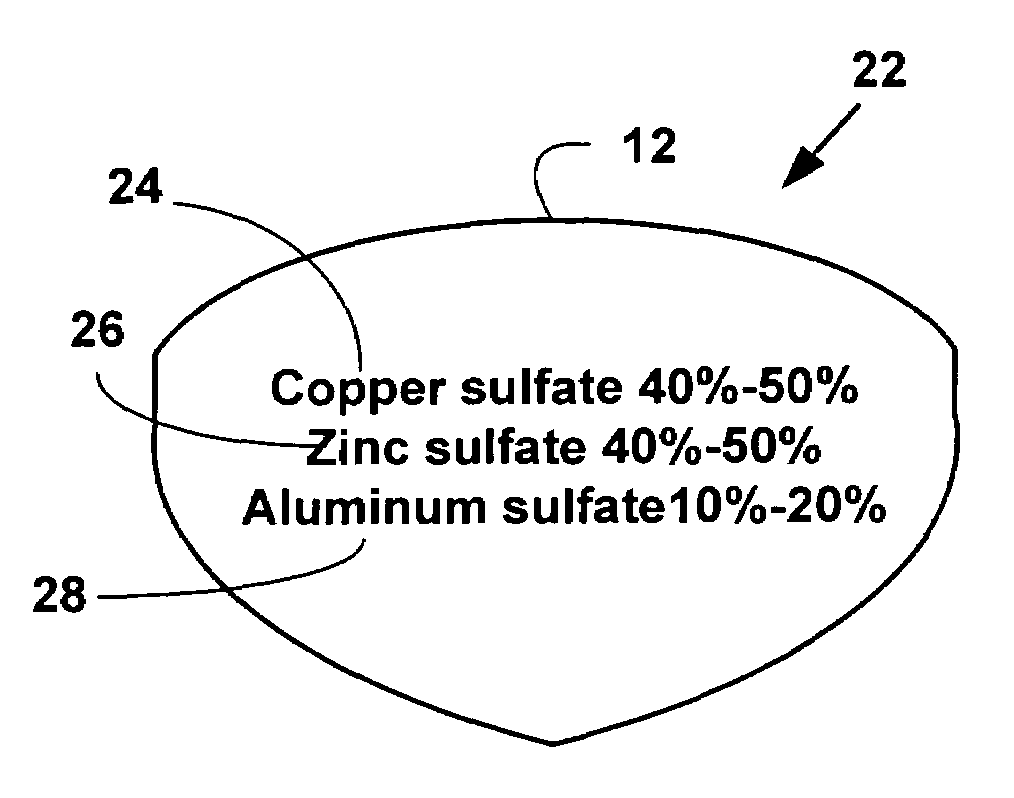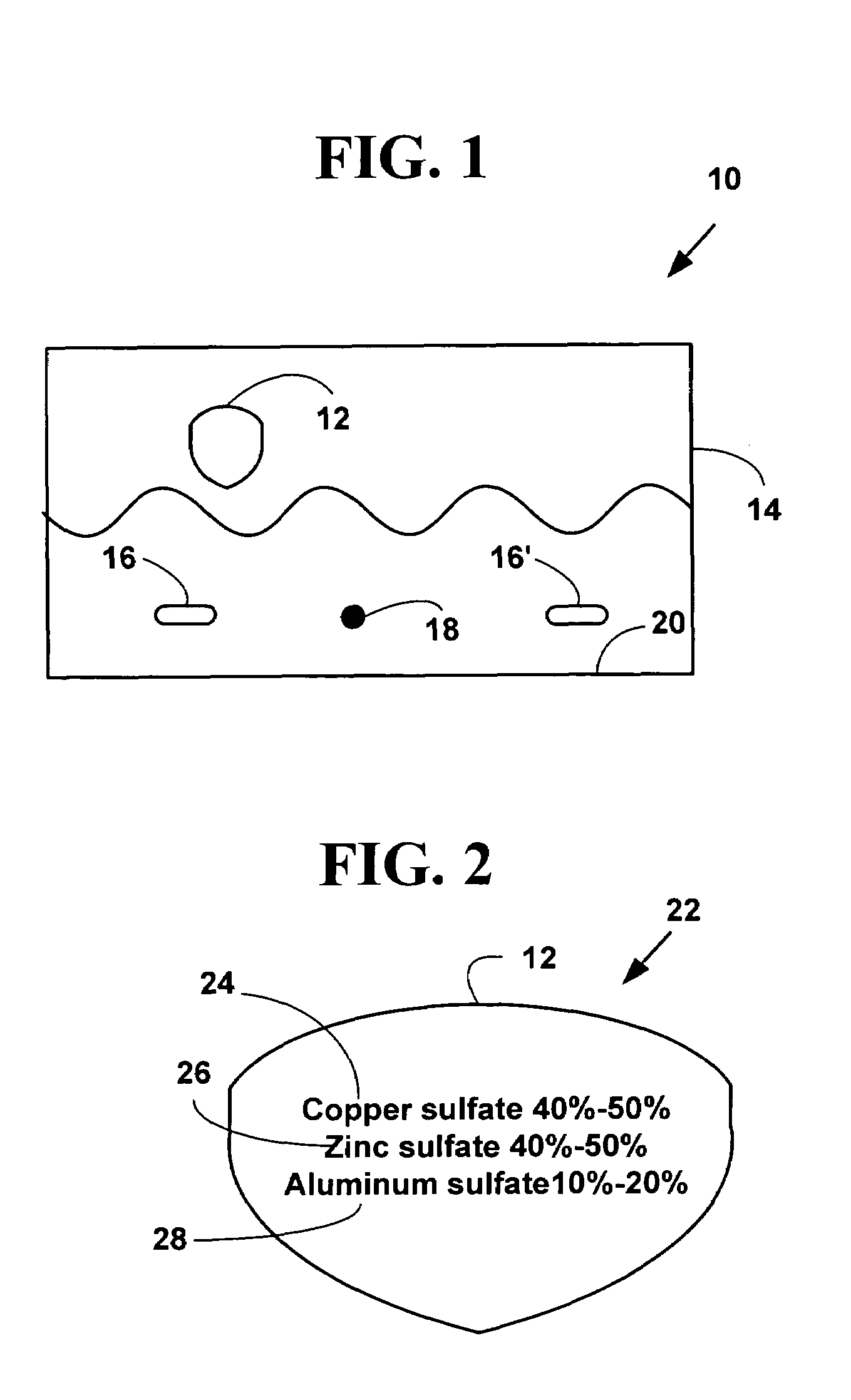Composition for cleaning contained bodies of water
a technology for cleaning contained bodies and water, applied in water softening, application, separation processes, etc., can solve the problems of insufficient production of hypoclorous acid in the chemical breakdown process, the difficulty of cleaning contained bodies, so as to reduce the amount of chlorine and labor, and reduce the effect of labor
- Summary
- Abstract
- Description
- Claims
- Application Information
AI Technical Summary
Benefits of technology
Problems solved by technology
Method used
Image
Examples
Embodiment Construction
Exemplary Water Cleaning System
[0035]FIG. 1 is a block diagram illustrating an exemplary water cleaning system 10. A composition 12 is added to a contained body of water 14 (e.g., swimming pool, wading pool, fountain, ornamental pond, etc.) to sanitize the water and maintain its chemical properties within pre-determined limits. The composition 12 helps kill and reduce to safe levels any microorganisms 16, 16′ that are present in the water 14. The composition 12 also causes debris and other particulate matter 18 to sink to a bottom 20 of the contained body of water 14 for easy removal (e.g., by vacuuming). The composition 12 also causes an amount of chlorine added to the contained body of water 14 to be reduced. However, the present invention is not limited to a water cleaning system with the described components and more or fewer components can also be used to practice the invention.
Exemplary Composition for Cleaning and Sanitizing Contained Bodies of Water
[0036]FIG. 2 is a block di...
PUM
| Property | Measurement | Unit |
|---|---|---|
| pH | aaaaa | aaaaa |
| pH | aaaaa | aaaaa |
| rms voltage | aaaaa | aaaaa |
Abstract
Description
Claims
Application Information
 Login to View More
Login to View More - R&D
- Intellectual Property
- Life Sciences
- Materials
- Tech Scout
- Unparalleled Data Quality
- Higher Quality Content
- 60% Fewer Hallucinations
Browse by: Latest US Patents, China's latest patents, Technical Efficacy Thesaurus, Application Domain, Technology Topic, Popular Technical Reports.
© 2025 PatSnap. All rights reserved.Legal|Privacy policy|Modern Slavery Act Transparency Statement|Sitemap|About US| Contact US: help@patsnap.com



